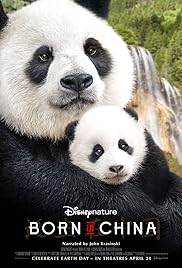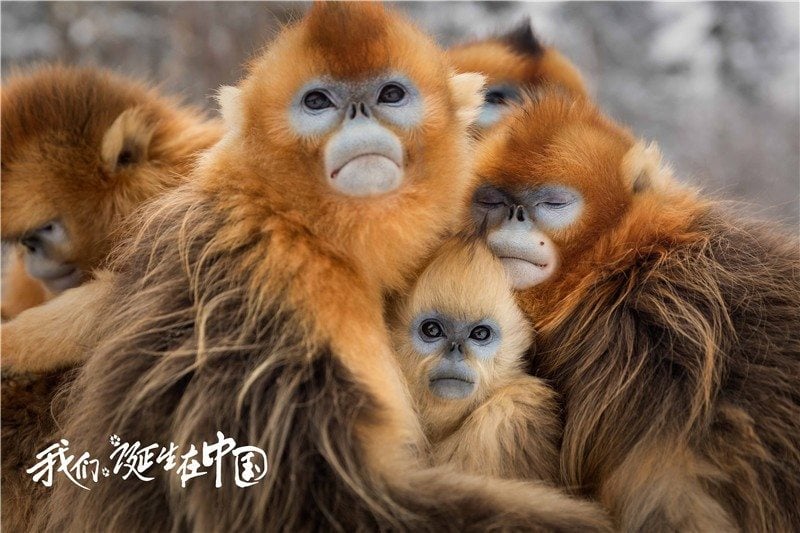In the vast wilderness comprising huge swathes of China’s mainland live many diverse species, and from the lumbering giant panda to the fleet-footed chiru antelope, Disney’s most ambitious nature docu-drama to date finds its crew following several animal families through the shifting seasons in Born in China.
Narrated for its English release by John Krasinski (it was also released in 2016 to Chinese audiences, narrated in Mandarin), the film closely follows the mythologies and realities of life for five distinct species, focusing on the relationships between the animals and their world all while displaying the natural beauty of China’s wilderness. Through driving snow and hail in deep mountain passes, lush panoplies of autumnal forest colors, and storms roiling through the expansive lake plains, Disneynature’s filmmakers capture some of the most breathtaking scenes of untouched China – and bring the private daily lives of its most celebrated species into the spotlight.
Bookending in the flight of red-crowned cranes, the birds associated with Chinese mythology surrounding the fate of souls at the times of birth and death, the film begins and ends with a small family of endangered snow leopards in the mountains. A solitary female with her two cubs must scour the jagged peaks of their secluded home amidst the mountains for sheep and yaks to hunt, while fighting for territorial rights from a rival clan. Survival is not a guarantee in the wild – and, while Disney does edit its film to shield its younger viewers from the bloody violence often prominent in such documentaries, it is clear that there are indeed hardships in the lives of these creatures.
From the mountains, the focus shifts into the canopied forest, where a juvenile male golden snub-nosed monkey begins his journey to maturity when he leaves the enclave of his family to join a pack of fellow ousted juveniles. Narratively, the film treats this as a search for identity, as the little monkey learns to trade in protection and freedom – often necessities in the wild. The group of primates plays out like the cast of a soap opera or a teen drama, with Krasinski’s narration lending thoughts and feelings to the personalities displayed by each of the individual animals.
The anthropomorphic narrative spreads into the depths of the bamboo forest, where a mother giant panda comes to grips with her cub’s increasing independence as she grows. Footage of pandas in the wild is a rare gift, and here the close shots of a tiny newborn cub snuggled into her mother’s side provide glimpses into their very intimate bond as, over the course of a little over a year, the baby is weaned and learns first to crawl, then to climb. The life of a giant panda consists mostly of eating and rolling through the bamboo, with little drama – but the story Born in China tells introducing the mother and daughter pair is really a human one. Watching a cub come into her own is, in the film’s world at least, very much like a human mother watching her child grow up and leave the safety of the nest.
Peppered in between the three main stories is a miniature narrative focusing on a herd of chiru antelope, whose females travel apart from the males for several months to birth calves before rejoining their mates to begin the process over again. Achingly resplendent wide shots of every facet of China’s wilds combine with the familiar, personal stories of each group of animals, creating a combination that works – without resorting to politicizing or lecturing about environmentalism, or even the fates of the endangered species it showcases. Smartly, Disney stays away from being preachy here, zeroing in instead on the ways these animals are so much like we are, hoping this will be enough to incentivize viewers to care more about the future of these and other, similar species in dire straits.
Purchasing a ticket for Born in China during its opening week, April 21 through April 27, will ensure a donation of $0.20 to the World Wildlife Fund in support of golden snub-nosed monkeys and snow leopards, as those seen in the film, through the Disney Conservation Fund. Disney states a guaranteed minimum donation of $100,000 regardless of ticket sales, but a release just one day before Earth Day is a clear indication that the company hopes for a decent turnout to help the WWF work to save these precious species.
Share this review.
-Dana Culling



